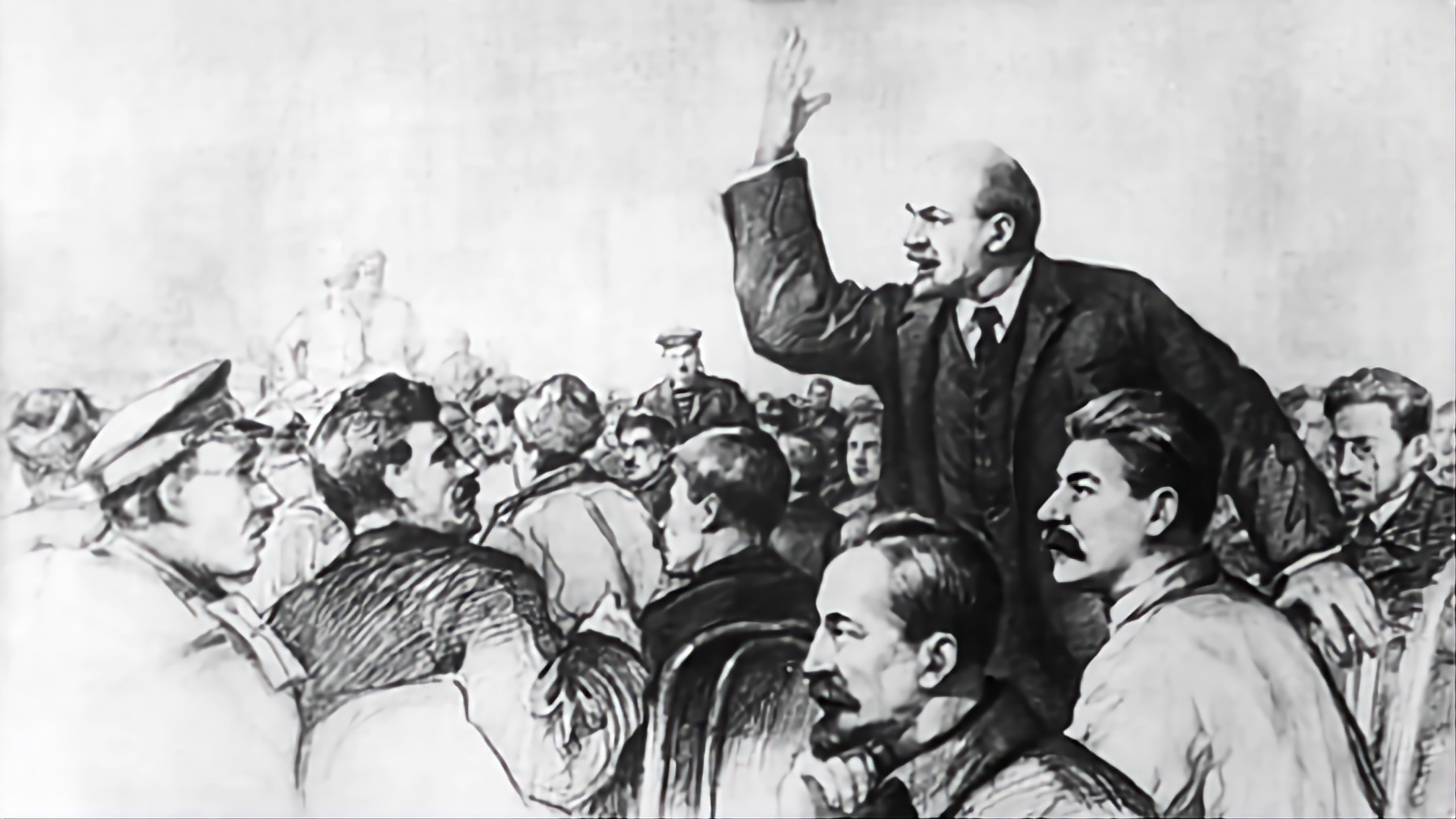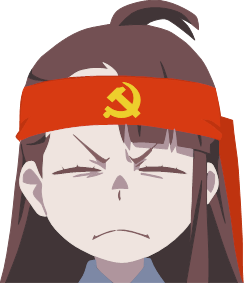KobaCumTribute [she/her]
- 46 Posts
- 727 Comments

 30·2 days ago
30·2 days agoSomeone showed him an industry ad video for the sort of big sensor array things they install in some border checkpoints and he couldn’t comprehend any of it apart from seeing a big thing moving and hearing someone claim it helps find hidden drug compartments.

 4·2 days ago
4·2 days agoHow does this work? Where am I getting the initial funding? Who am I? Who authorised this? What is this madness?
In the second campaign, the backstory is that you’re basically supposed to be an eastern european country that was colonized by a western power that built some infrastructure to aid in resource extraction, except you revolted against them, gained autonomy, and established a socialist state of sorts, with your objective being to attain autarky and modernize the scattered villages throughout the country.
So there at least, I’d guess the $2,000,000 balance is from seizing the US-backed dictator’s wealth, and the 10,000,000 rubles you start with were either the result of selling captured western equipment to the Soviets or a sort of hands-off foreign aid grant from alternate timeline more-liberal-brained Khrushchev.
Well, the workers aren’t going to go wageless/salariless regardless of whether or not they are working on the project, and I don’t think that there even were contract workers in the USSR.
This made me think of two things, one related to the game and one not. The first is that nothing domestically involves currency that you deal with, all the money is foreign currency used for trade; that means that your internal economy is running purely off some kind of labor voucher system and abstracting away both the wages workers earn and what they spend on goods and services as an overall balanced and isolated system.
The second is that AFAIK starting under Khrushchev (IIRC) there was a tacit acceptance of a so-called “second economy” in the USSR, which involved comparatively small scale private exchange for crops grown in personal plots, craft goods, and contract services like repairwork that existed outside the centrally planned institutions.
Tangentially, that’s making me think about the centralized state-run farm equipment depots in the game, and how one of Khrushchev’s more notably hair-brained and disastrous reforms was privatizing that sort of thing so that farmers had to own and maintain their own tractors, which made maintaining them way more expensive and reduced overall agricultural efficiency since “idk lmao everyone do it for themselves” is much worse than having centralized depots staffed by mechanics whose whole thing is maintaining them and who have all the tools and materials on hand to do so in one place. Also that contemporaneous to that in China, farm machinery was rare and the rural communes weren’t really communes yet, so the farmers who’d managed to get access to tractors and the like quickly turned around and became private contractors who’d go and use the tractors on other farmers’ fields for compensation and within just a couple of years of that being the status quo it was already creating a problematic wealth inequality between farmers in general and the sort of contractor tractor-kulaks that had to be addressed by the state.

 5·2 days ago
5·2 days agoFrom where?
A neighboring country, either Soviet or Western depending on the currency you use for this.
Firstly, why does your state not have construction workers?
Because you don’t have local construction coordinating offices and vehicle depots yet, so you’re relying on outside help.
Secondly, why can’t you requisition the workers from the USSR or another planned economy?
You do, but they want compensation. It’s kind of a gamification of… Actually, you know what? Given the time period it defaults to (starting in 1959), I’m just gonna blame Khrushchev. Maybe it’s an alternate history where he was even more revisionist and did more Gorbachev level dipshittery with trying to liberalize the central planning.
A more realistic answer is that you’re entirely independent and just maintain neutral terms with both the Soviets and the West, so even though you can freely trade with both neither is going to come in and build things for you or make any sort of demands of you. Which is ludicrously unrealistic considering you’re sitting on huge deposits of oil, coal, metals, and uranium, but that’s city builder logic for you.
Why can’t you source it from your own state? Why are your options limited to either producing the resources within the city,
You’re running an independent border republic roughly the size of something like Andorra, maybe a little bigger. Everything outside your borders is foreign, even the Soviets.

 10·2 days ago
10·2 days agoWhen you buy buildings you are buying the resources, having them shipped in, and having foreign contract workers come in with that to actually build it for you using their equipment. It’s just it abstracts this away for the sake of gameplay. It’s like when buildings are purchasing and importing the goods they need, it’s abstracting the actual delivery of them from outside.
It may be a game setting to enable a more complicated build option (so if you’re still in the tutorial campaign this may be disabled, I’m not sure), but if you look down at the right corner where you have “finance with rubles” and “finance with dollars” boxes, there should be a third one to the right of them that uses local resources and labor. That doesn’t cost money (directly, but if you’re filling warehouses of material with the auto-import purchase option that will cost money) but requires construction offices staffed with transport and heavy construction vehicles, as well as busses to take workers to the site, and you need to be sourcing all of those things from somewhere.

 9·2 days ago
9·2 days agoIt’s always neat when a word’s etymology basically boils down to “so yeah it literally meant this other thing which it would intuitively mean, but that’s been wiped out by a flowery idiomatic use of it to mean that same thing only allegorically instead of literally, to the point that no one even thinks about what the underlying literal meaning of it is anymore.”

 2·2 days ago
2·2 days agolike I need the villain speed 4% faster.
That’s just NOED.

 4·2 days ago
4·2 days agoIIRC it established two separate levels of the disease that’s basically the same as the later ghoul/feral ghoul divide in Fallout. So there were vampire zombies that hunted people - including each other - and ones that had managed to stabilize the condition with medical treatment. He hunted them indiscriminately, and it was the latter group that managed to take him out with an organized military strike on his fortified compound.

 3·3 days ago
3·3 days agoI don’t know what the problem I was running into was then.

 4·3 days ago
4·3 days agoI don’t know what the deal is then, because that was the very first thing I tried: setting up a route between bus stops expecting them to work like in Cities: Skylines only to watch as empty busses just circled around between stations and never, or almost never, picked anyone up even when there were people waiting there. It wasn’t until I learned you could target individual buildings as stops that busses started filling up.

 4·3 days ago
4·3 days agoNo, “If a citizen is unable to find a building that they’re looking for in walking range, they will instead walk to a nearby public transport station where they wait to be picked up by a vehicle, and willingly disembark at the first station that has their desired building in range”
I have not been able to get that to work. If the route just goes through stations no one ever boards and it just cycles empty busses indefinitely even with full stations. It’s only when I start pointing the bus at specific buildings that they start filling up and working as expected.

 10·3 days ago
10·3 days agopeople walk only a certain distance of i think 100 meteres
I think this depends on the type of path they have? Like they’ll budget their route to walk for up to X amount of time to reach a location, and the distance is determined by how far they walk in that time? The furthest I’m seeing for “within walking distance” of some buildings is just over 450m with the full 100% walking speed paths along the whole route. Unless this is further modified by a game setting - I went into the campaign (not the tutorial one) with whatever settings it defaults to.
you get a bus depot, buy the busses, and then assign them all routes there.
Right, with the caveat that the routes themselves have to be pointed at buildings to drop people off at, not just other stops. If a bus isn’t going directly to a potential workplace, school, or shop no one will board it and it took me entirely too long to figure that out.
Like bus stops (and I assume passenger rail platforms) aren’t set up to shorten pathfinding to desired locations, they’re a place of last resort that unfulfilled citizens go in the hopes that a bus that can take them to a desired location type shows up at some point.
And to answer my own question: they do seem to just teleport home when they finish a task, they don’t gather to be brought back. That’s another unintuitive thing coming from Cities: Skylines, that traffic isn’t like a back and forth sort of thing for anything but the dedicated vehicles that go through specific routes. Maybe citizens with personal cars are different? Or maybe this a mechanic hidden behind one of the settings, idk.

 5·4 days ago
5·4 days agoThe images say aella on them, so I’m guessing that’s who.

 13·5 days ago
13·5 days agoWhy is it that men who get the tinniest taste of wealth and power open palm slap the “become a pedophile” button?
I think it’s because it’s not distinct from the typical predatory and pathological sexuality that a lot of men are socialized into, and how entrenched the infantilization of women is in misogyny in general. They already see women as lesser beings to be owned and used as they please, and have internalized the idea that wealth entitles them to do this and protects them from consequences, so it’s a simple matter to expand their range of desired victims from adult women to teenage girls.
And that phenomenon is everywhere in American society and has been deeply entrenched for longer than anyone today has been alive. It’s an integral part of American patriarchy and it’s only in the past couple of decades that there’s been any serious - or at least successful - effort to stamp it out.

 38·5 days ago
38·5 days agoAh yes, three “experimental approaches”: a grift, another grift, and the barest minimum dose of states actually maybe doing some fraction of the established and time-tested method of actually addressing the problem.

 2·5 days ago
2·5 days agoI prefer habeneros or brazilian starfish peppers (those in particular are great - I grew some one year and they were basically the perfect pepper to slice up and add to a pizza) myself. I really need to start growing hot peppers again.

 9·5 days ago
9·5 days agoI think that got mentioned in the director’s commentary too. I remember The Wire’s director’s commentary track being pretty good as such things go, because it had a lot of stuff like that alongside stories about the actual people some of the characters were based on.

 10·5 days ago
10·5 days agoPineapple covers two (sweet and acid) of the four major flavor-carrying categories (sweet, acid, salt, and fat) and cooks up to have nearly as much of a sort of substantialness as cooked tofu or meat does. These characteristics make it mesh neatly into basically any dish and allow it to serve the same role as a wide range of other ingredients as long as one’s cognizant of what it’s adding and what the substituted ingredient would have added.

 7·5 days ago
7·5 days ago“Hawaiian pizza” is mid because of the ham, and also because it’s usually like unripe frozen or canned pineapple. What you want are slices of fresh pineapple on a pepperoni pizza with onions and chopped garlic. Oh, and fresh basil leaves underneath the cheese and pepperoni to protect them from the heat - the onions and pineapple on the other hand go on the very top so they get the most intense heat.

 16·5 days ago
16·5 days agopineapple is an acceptable pizza topping, you should be mocked and shunned from society.
Americans will wash their food down with straight corn syrup but cry if some fruit touches their savory dinner treats.
The correct answer to “will adding cooked pineapple to this dish improve it?” is always “yes, that will always improve everything whether it’s a burger or curry or pizza or soup or rice.”





Look, the car may or may not perform basic car related functions, who can say. When you’re moving fast and breaking things you can’t be concerned with theoretical problems like the some of the very first functionalities ever introduced to cars, or whether or not the car will decide to literally move fast and break things on its own.